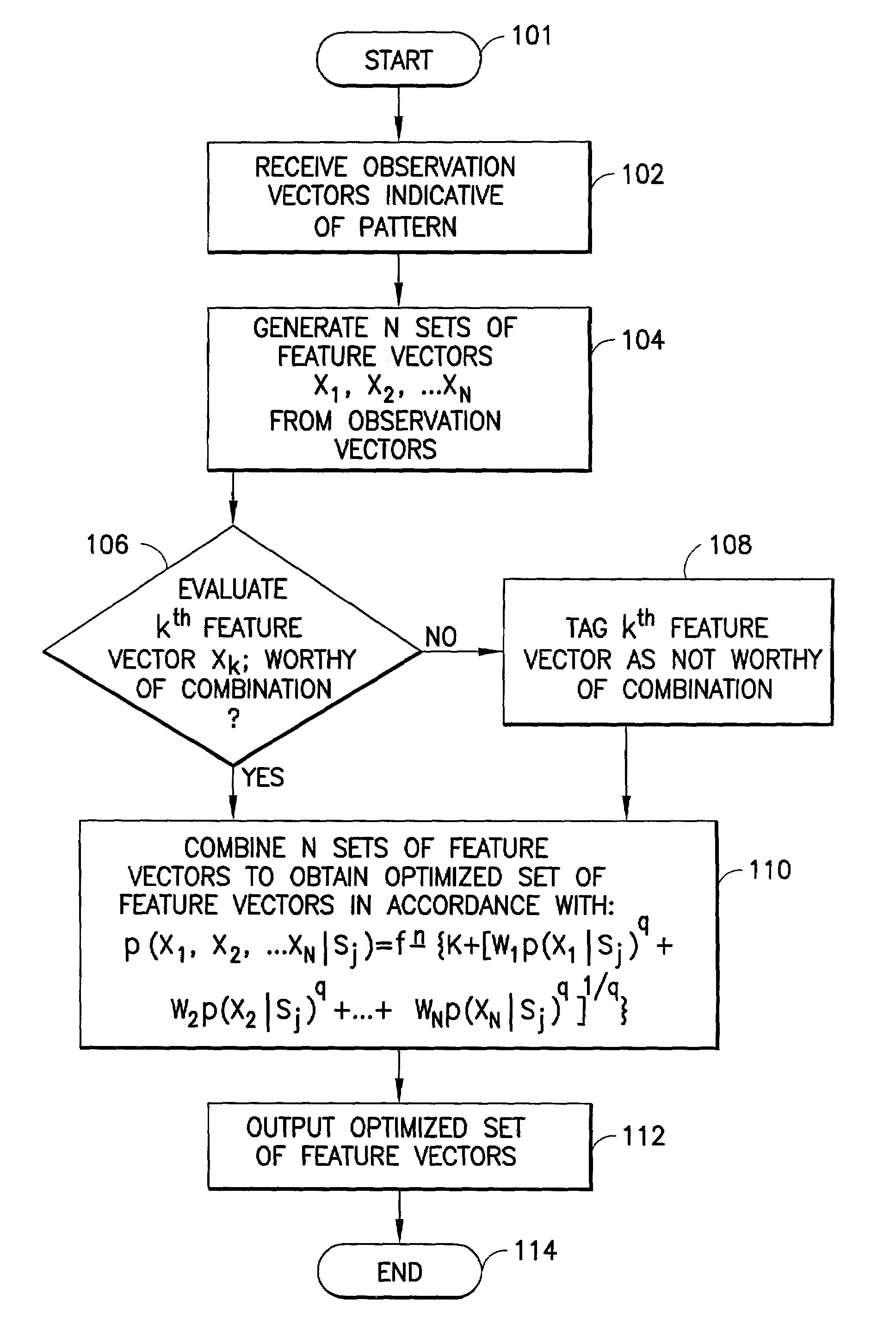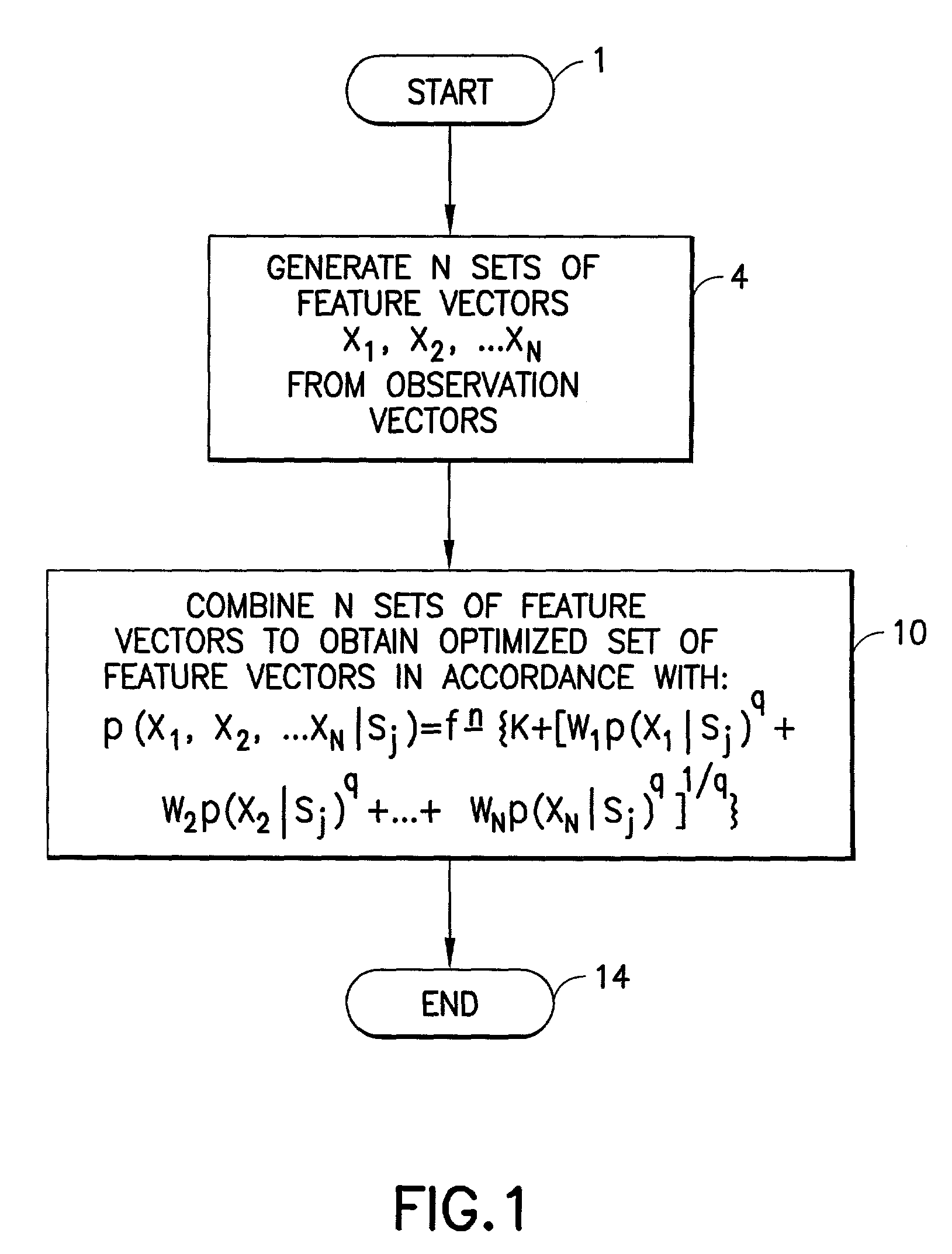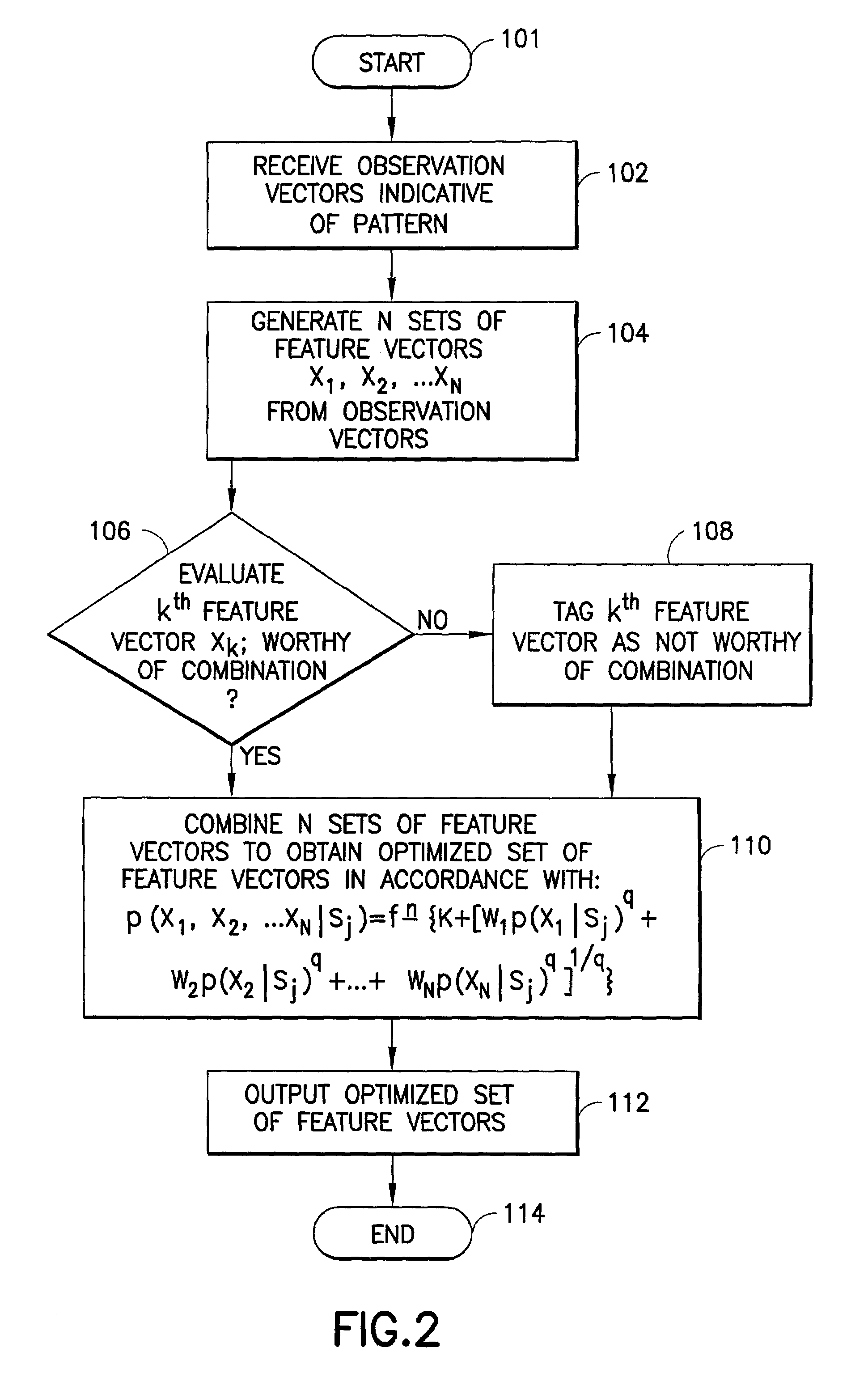Feature vector-based apparatus and method for robust pattern recognition
a feature vector and pattern recognition technology, applied in speech recognition, speech analysis, instruments, etc., can solve the problems of not optimally combing the different feature vectors, schemas may substantially increase the computational load during decoding, etc., to improve acoustic modeling, reduce insertion and substitution errors, and reduce errors
- Summary
- Abstract
- Description
- Claims
- Application Information
AI Technical Summary
Benefits of technology
Problems solved by technology
Method used
Image
Examples
example
[0063]Certain additional comments will now be presented regarding an illustrative application of the present invention to speech recognition. The IBM Continuous speech recognition system can be used with the present invention and uses a set of phonetic baseforms and context dependent models. These models are built by constructing decision tree networks that query the phonetic context to arrive at the appropriate models for the given context. A decision tree is constructed for every sub-phonetic unit. Each terminal node (leaf) of the tree represents a set of phonetic contexts, such that the feature vectors observed in these contexts were close together as defined by how well they fit a diagonal Gaussian model. The feature vectors at each terminal node are modeled using a mixture of Gaussians with each Gaussian having a diagonal covariance matrix. The leaves of the decision tree correspond to context-dependent HMM states.
[0064]The IBM system also uses a rank-based decoding scheme as d...
PUM
 Login to View More
Login to View More Abstract
Description
Claims
Application Information
 Login to View More
Login to View More - R&D
- Intellectual Property
- Life Sciences
- Materials
- Tech Scout
- Unparalleled Data Quality
- Higher Quality Content
- 60% Fewer Hallucinations
Browse by: Latest US Patents, China's latest patents, Technical Efficacy Thesaurus, Application Domain, Technology Topic, Popular Technical Reports.
© 2025 PatSnap. All rights reserved.Legal|Privacy policy|Modern Slavery Act Transparency Statement|Sitemap|About US| Contact US: help@patsnap.com



